Saint Petersburg is Peter the Great’s window to Europe, and a more beautiful city probably does not exist anywhere in the world. The many palaces, boulevards and unique museums make the city something special, and as a city it is inscribed as UNESCO world cultural heritage.
Saint Petersburg is home to the world’s largest museum, The State Hermitage, whose collections contain countless works by almost every famous old master and of course the setting in the Winter Palace, which is in itself a piece of world history. The Russian Museum comes next and impresses almost in the same way; the focus here is the magnificent Russian art includings icons.
A trip to Saint Petersburg is also a meeting with the many beautiful Czarist palaces; besides the Winter Palace there are two grand summer palaces; Peterhof and Catherine Palace. The Baroque and, in particular, the works of Italian architect Rastrelli impress, as they did in the times of the Czar.
A trip to Saint Petersburg is not complete without a walk along the Nevsky Prospect, one of the most famous streets in Europe. Here you will find numerous churches, palaces, shopping arcades and much more. Not far from here you can visit the great Isaac Cathedral and the elegant Mariinsky Theater, one of the world’s leading and a venue from the time of the Czars.
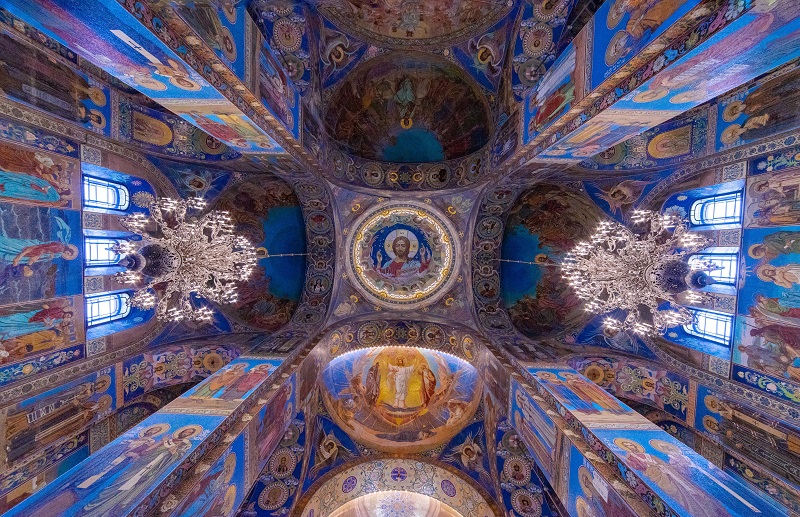
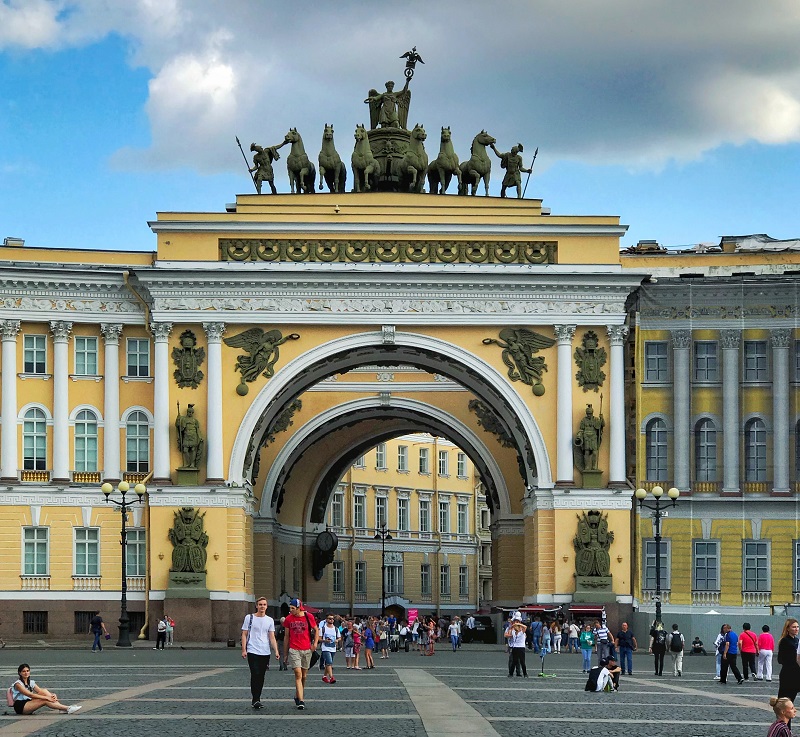
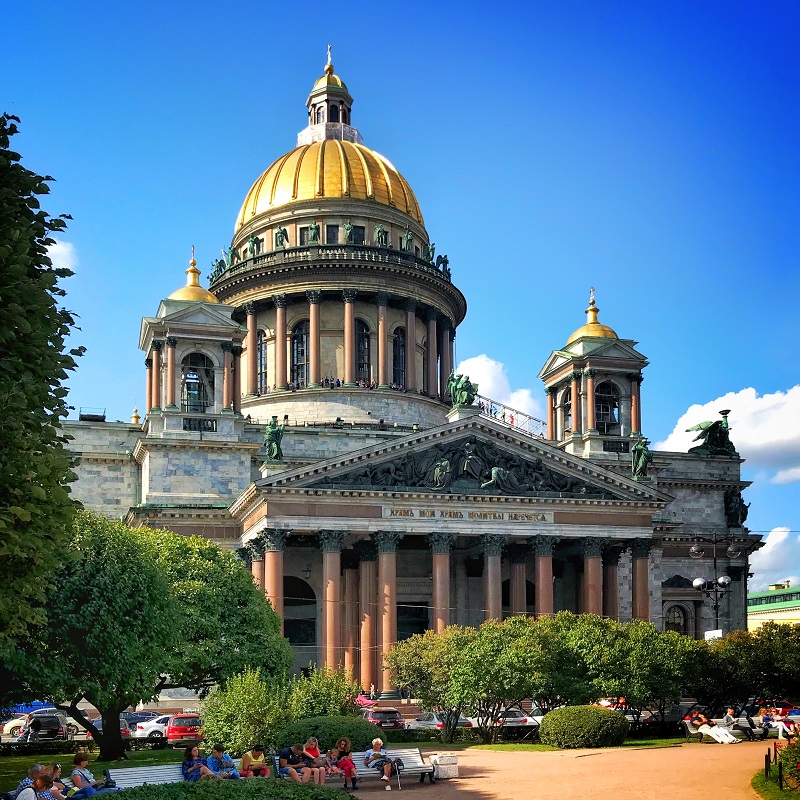
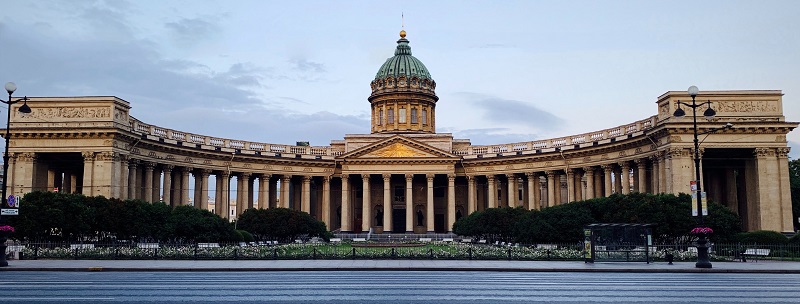
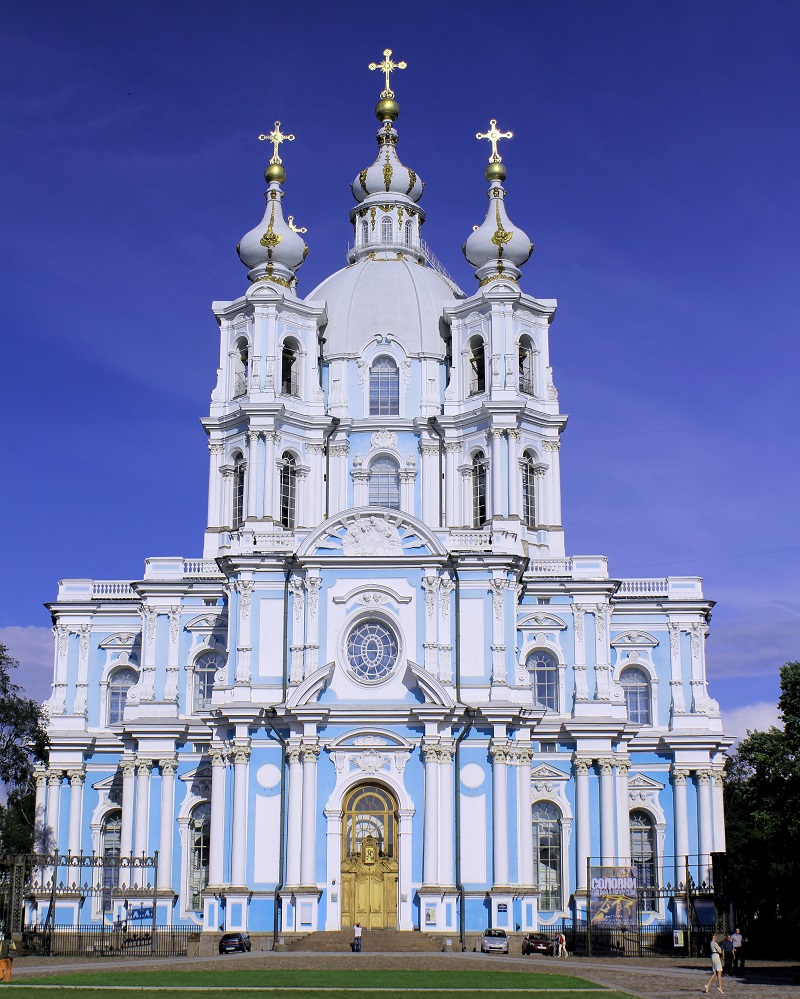
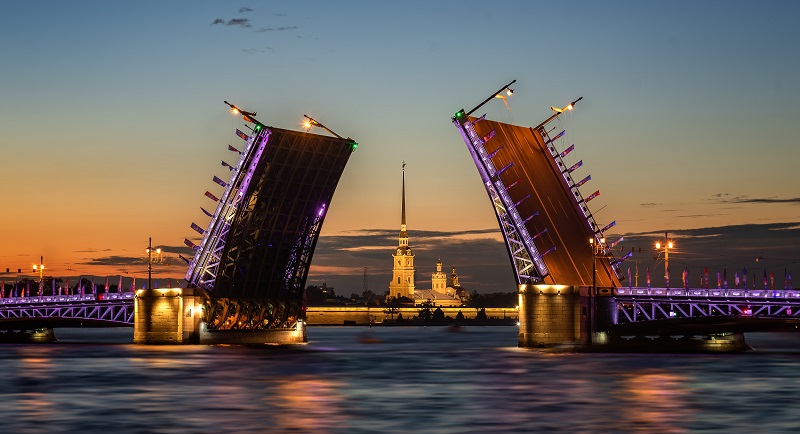
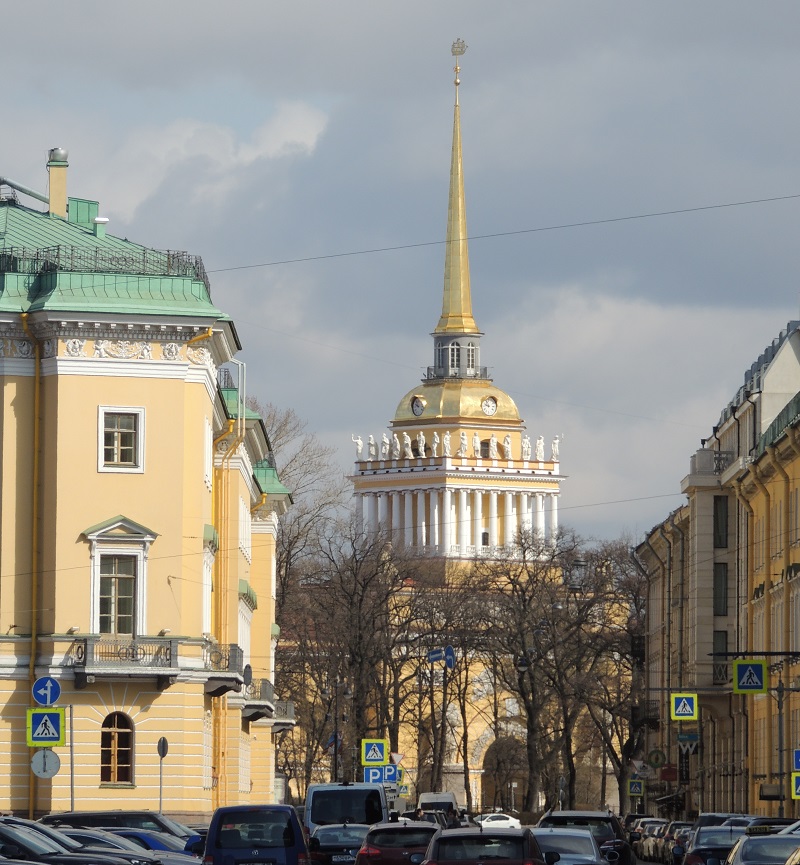
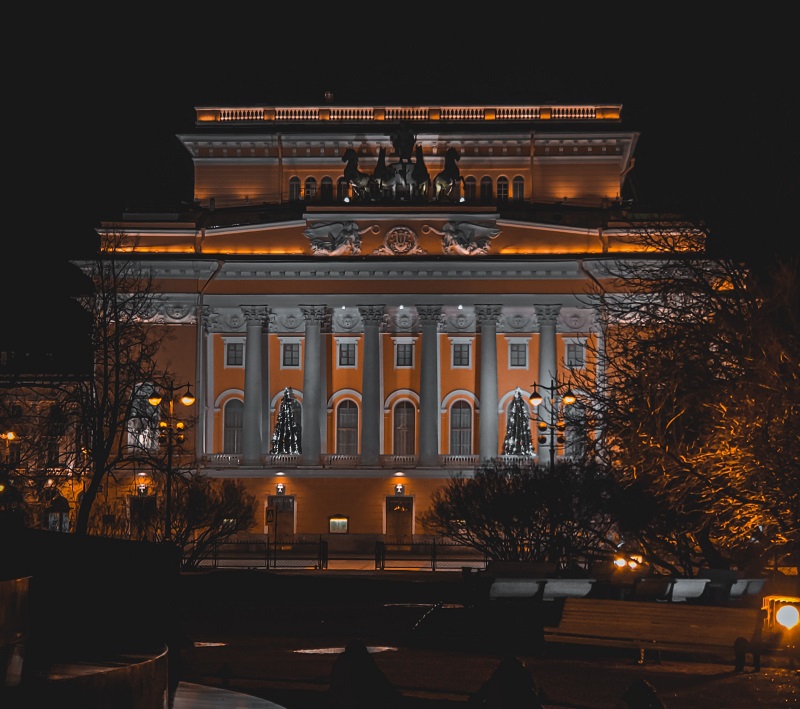
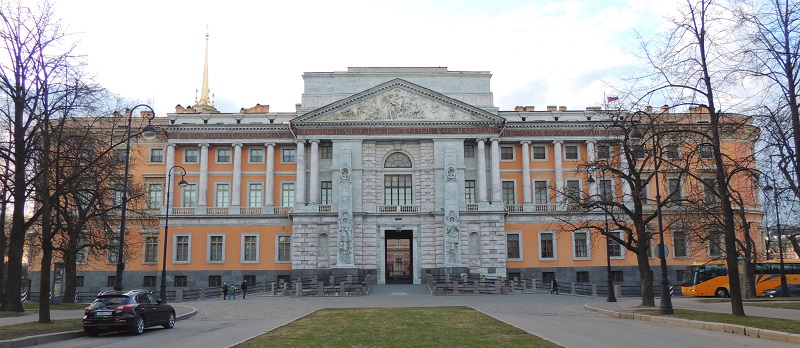
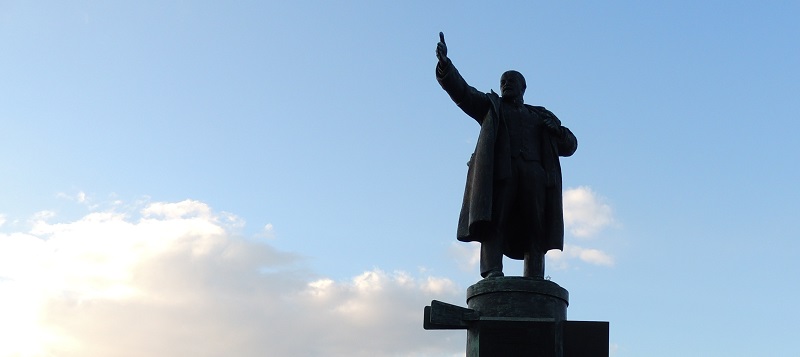
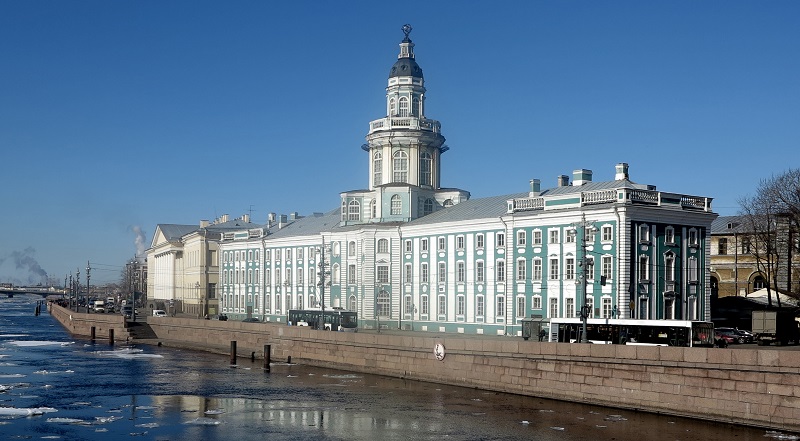
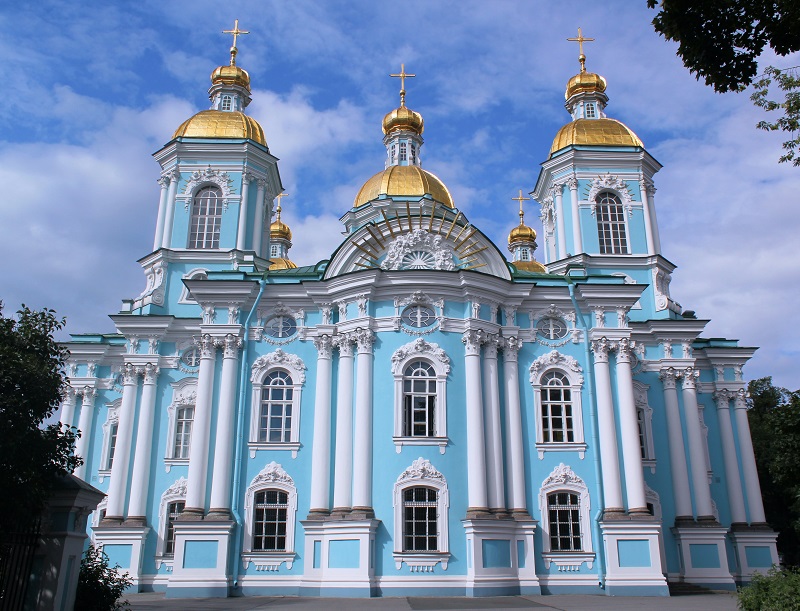
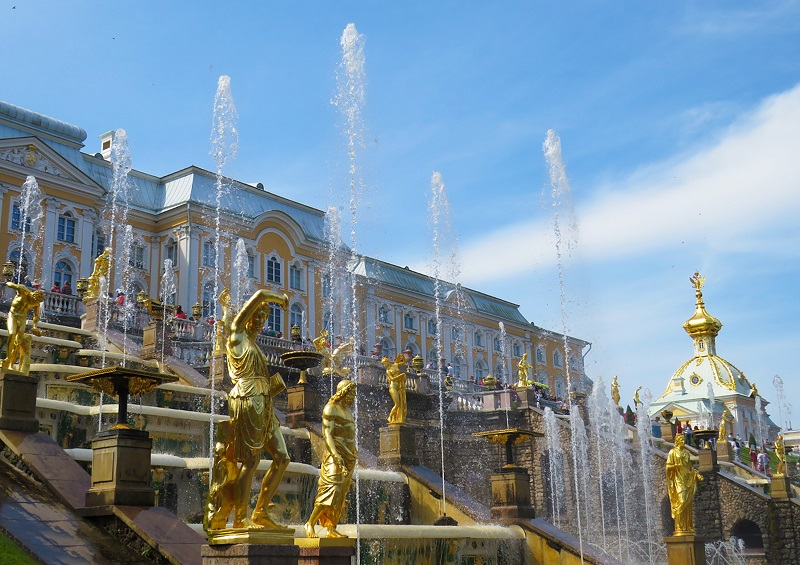
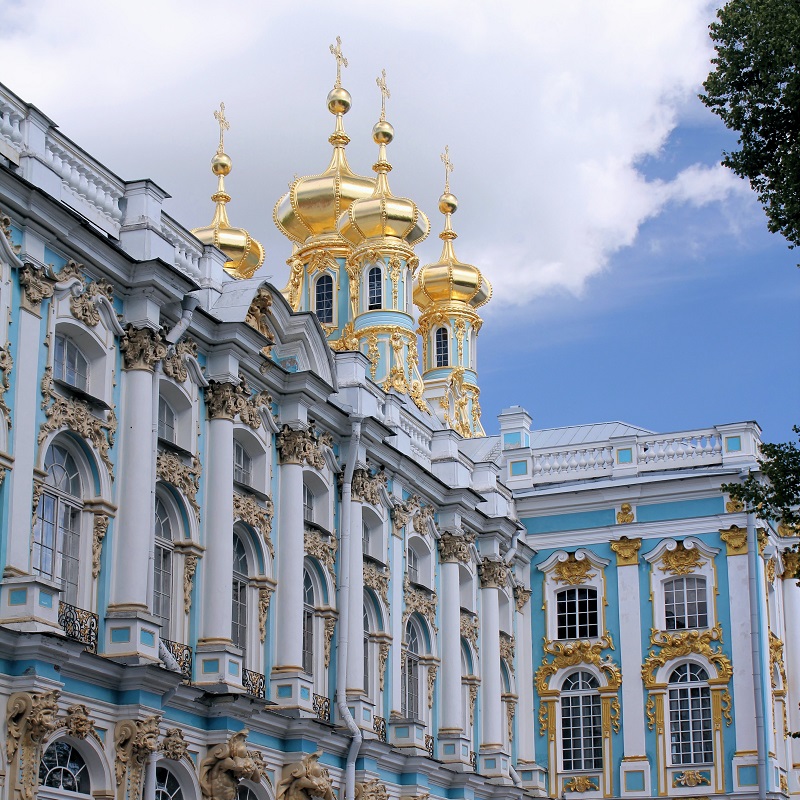
Peter the Great’s City
In the mouth of the river Nevas in the Gulf of Finland Alexander conquered Novgorod in 1240 Swedes. His name was Alexander Nevsky, and the story of the importance of the region for Russia had thus begun.
However, the Swedes returned about 400 years later, but it was only borrowed time. They had the fort built Nyenskans at the Neva River in 1611, but it was conquered by Peter the Great on May 1, 1703.
Saint Petersburg could then be founded on May 27, 1703, by Tsar Peter the Great, after he had conquered the area in the Great Nordic War against Sweden during the battles that lasted from 1700-1721. He named the city after his patron Saint Peter.
Peter the Great had been on a diplomatic and cultural tour of Europe; it was the so-called Great Embassy. Here he became convinced that Russia’s future lay in getting closer to Europe both physically and mentally. The swampy area at the mouth of the Neva River was what should be Peter and Russia’s new window to Europe.
The city was built
Saint Petersburg started as a fortress in the form of the current Peter-Paul Fortress, which is strategically located on an island in Neva. With protection from the fortress, houses began to be erected on both sides of the river – all designed according to a city plan with large boulevards and squares that matched what Peter the Great had experienced in Western Europe.
After the great Russian victory in 1709 at the Battle of Poltava, the construction of the city accelerated. Thousands of artisans, peasants and soldiers moved to the city, and in addition to the houses, passages were felled in the forests of the future great streets of the future as well as drained and dug canals that enabled the city’s expansion.
Saint Petersburg was built at a tremendous rate, almost only interrupted by floods from Neva; the first hit already three months after the city’s founding.
Saint Petersburg’s port was opened in 1703, and as early as 1726 it was the country’s largest, and thus the most significant, in the tsar kingdom.
This was partly due to the fact that wealthy people were given land to quickly expand the city, which in 1712 became Russia’s new official capital and the city of the czar’s residence. Peter the Great brought the leading architects and builders from all over Europe to Saint Petersburg, where they were to build the city’s new splendor.
Flourishing cultural
In the first half of the 18th century, Saint Petersburg was Russia’s leading city in science and culture. Universities had been erected and the city attracted the great Russian writers and poets such as Pushkin and Tolstoy.
The large collections, which later became the backbone of the city’s world-famous museums, were also started during this time. This applies, for example, to Peter the Store’s own collection of effects, which he kept in the art room.
By the death of Peter the Great in 1725, the town’s population was large and 90% of the country’s trade went through this. The nobility also lived here, with the influence having been moved with the Czar from Moscow to Saint Petersburg. Thus, Peter the Great’s dream of Europe had been realized in just a few decades.
Empresses and Architecture
Moscow again became the capital a short transition, but after a few years Empress Anna I moved again to Saint Petersburg, and the following rulers erected all major palaces in the city and the area.
Saint Petersburg was now one of Europe’s most grand capitals, and there was no doubt that it was the city of the Czar. Among the major builders was Catherine the Great, who ruled through most of the latter half of the 18th century.
The architectural styles also evolved over time. From Peter the Great’s Petrine Baroque to the Baroque and Rococo Baroque and Italian Rococo of the Italian to Catherine the Great’s preferred neoclassicism; all of this can be found in fine examples in St. Petersburg.
Imperial era and industrialization
In the 19th century, the city continued to expand, and industrialization accelerated further. Workers moved in large numbers to the city, which suffered from overcrowding, poor sanitary conditions and epidemics. There were various plans for the construction of, for example, a metro in the city, but many were not realized.
The 19th century was also marked by an expanding czarist kingdom, with Russia extending to the Pacific Ocean, and the czar’s kingdom was expanded to the south.
The tensions between the monarchy and the people in 1905 set off an attempt at revolution. Strikers marched to the Tsar in the Winter Palace, where they were met by the sharp resistance of the military. The revolution was annihilated and the Imperial period could continue for a few more years.
St. Petersburg changed its name to the more Russian-sounding Petrograd in 1914, when the country was at war against Germany, among others. At this time, the city had two million inhabitants.
The fall of the Czar and the rise of the Soviet Union
With the Russian Revolution during World War I, the Czarist regime was wound up and the Soviet Union established. It came to revolution both in February and October, when the Czar could no longer continue on the throne. The monarchy was abolished and the czar was arrested with family in one of the many palaces that the rulers had built for over 200 years.
The communist takeover caused the Union capital to be moved from Petrograd to the more centrally located and former capital of Moscow. Politically, Petrograd was weakened, but culturally it was and continues to be regarded as the country’s leader.
After Lenin’s death in 1924, Petrograd was renamed again. This time to Leningrad, in tribute to one of the creators of the Soviet Union and the man who, a few years ago, had come by train from Finland to start the revolution in 1917.
The 20th Century to Today
Throughout the 1930s, the city was the center of Stalin’s industrialization, and the city accounted for 11% of the country’s production. Some churches were demolished, while the palaces of the Zaras turned into museums or administration buildings.
During World War II, known in Russia as the Great Patriotic War in Russia, Leningrad was besieged for 900 days by German troops, from September 8, 1941 to January 27, 1944. The city was held in an iron grip that made transportation impossible, for example, to supplies. to the big city.
The siege caused great famine, and the extremely cold winter of 1941-1942 made the situation worse. Water pipes were frozen, the city’s transport system stood still, and the only flimsy contact with the rest of Russia was over the frozen Ladoga Lake. Bombing of the city was also carried out throughout the siege, with approximately one million people killed. That was over a third of the population.
Leningrad maintained the siege and the city was not taken, but the city center, suburbs and the many beautiful castle facilities around the city were destroyed.
Leningrad was rebuilt over the following many decades and recovered from the colossal human and material losses.
With the fall of the Soviet Union in 1991, Leningrad regained its original name, Saint Petersburg, and it became adjacent to the Moscow power center in modern Russia. By the city’s 300th anniversary in 2003, St. Petersburg was shining like that of founder Peter the Great, and its population increased to about five million people.
Overview of Saint Petersburg
Saint Petersburg is Peter the Great’s window to Europe, and a more beautiful city probably does not exist anywhere in the world. The many palaces, boulevards and unique museums make the city something special, and as a city it is inscribed as UNESCO world cultural heritage.
Saint Petersburg is home to the world’s largest museum, The State Hermitage, whose collections contain countless works by almost every famous old master and of course the setting in the Winter Palace, which is in itself a piece of world history. The Russian Museum comes next and impresses almost in the same way; the focus here is the magnificent Russian art includings icons.
About the upcoming Saint Petersburg travel guide
About the travel guide
The Saint Petersburg travel guide gives you an overview of the sights and activities of the Russian city. Read about top sights and other sights, and get a tour guide with tour suggestions and detailed descriptions of all the city’s most important churches, monuments, mansions, museums, etc.
Saint Petersburg is waiting for you, and at vamados.com you can also find cheap flights and great deals on hotels for your trip. You just select your travel dates and then you get flight and accommodation suggestions in and around the city.
Read more about Saint Petersburg and Russia
Buy the travel guide
Click the “Add to Cart” button to purchase the travel guide. After that you will come to the payment, where you enter the purchase and payment information. Upon payment of the travel guide, you will immediately receive a receipt with a link to download your purchase. You can download the travel guide immediately or use the download link in the email later.
Use the travel guide
When you buy the travel guide to Saint Petersburg you get the book online so you can have it on your phone, tablet or computer – and of course you can choose to print it. Use the maps and tour suggestions and you will have a good and content-rich journey.
Winter Palace • Nevsky Prospect • Neva • Rastrelli • St Isaac’s Cathedral
Overview of Saint Petersburg
Saint Petersburg is Peter the Great’s window to Europe, and a more beautiful city probably does not exist anywhere in the world. The many palaces, boulevards and unique museums make the city something special, and as a city it is inscribed as UNESCO world cultural heritage.
Saint Petersburg is home to the world’s largest museum, The State Hermitage, whose collections contain countless works by almost every famous old master and of course the setting in the Winter Palace, which is in itself a piece of world history. The Russian Museum comes next and impresses almost in the same way; the focus here is the magnificent Russian art includings icons.
About the upcoming Saint Petersburg travel guide
About the travel guide
The Saint Petersburg travel guide gives you an overview of the sights and activities of the Russian city. Read about top sights and other sights, and get a tour guide with tour suggestions and detailed descriptions of all the city’s most important churches, monuments, mansions, museums, etc.
Saint Petersburg is waiting for you, and at vamados.com you can also find cheap flights and great deals on hotels for your trip. You just select your travel dates and then you get flight and accommodation suggestions in and around the city.
Read more about Saint Petersburg and Russia
Buy the travel guide
Click the “Add to Cart” button to purchase the travel guide. After that you will come to the payment, where you enter the purchase and payment information. Upon payment of the travel guide, you will immediately receive a receipt with a link to download your purchase. You can download the travel guide immediately or use the download link in the email later.
Use the travel guide
When you buy the travel guide to Saint Petersburg you get the book online so you can have it on your phone, tablet or computer – and of course you can choose to print it. Use the maps and tour suggestions and you will have a good and content-rich journey.






Similar to Saint Petersburg Travel Guide
There are no listings matching your search.
Reset